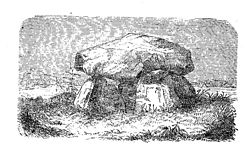Bhaga
Jump to navigation
Jump to search
Rta was the religion of the Boreo-Coians , which promoted a concept of earned immortality through reincarnation, a holy social order enforced by the gods, and the consumption of Myristica mel . This religious system probably emerged during the 18th or 17th centuries BCE as the Later Galdian Culture expanded into central and western Coius. There are few contemporary sources on Rta; much of its history is drawn from recording oral traditions and from comparative analysis of religions thought to have descended from Rta.
Origins
- Nomadic warrior aristocracy
- Dualistic view of gods
- Divine twins are representatives of the two groups of gods
- The Right twin upholds orders and happiness
- The Left twin brings confusion and suffering
- Need for strict social order as society expanded
Characteristics
- Realization (बना, bana) -- the process of achieving a second life through reincarnation through pious actions in this life.
- Divination -- priestly art of determining if someone is a new soul or a reincarnation and who someone is a reincarnation of.
- Searching -- the journey of past-self discovery which takes place when a priest does not who has been reincarnated.
- Worship -- observing the customs associated with the gods, especially the twin brothers of heaven.
- Construction (समाधि, samadhi) -- the creation of dolmen to honor past lives, in a more general sense, respect for ancestors.
- Horse sacrifice (अश्वमेध, asvamedha) -- respect for and occasional sacrifice of horses in order to ensure heaven's acknowledgement.
- Unborn (अजन्म, ajanma) -- observing the customs associated with those born through c-sections.
Legacy
- Satyism as a reaction to Realization.
- Qariban valley is full of the dolmen of past kings and warriors.
